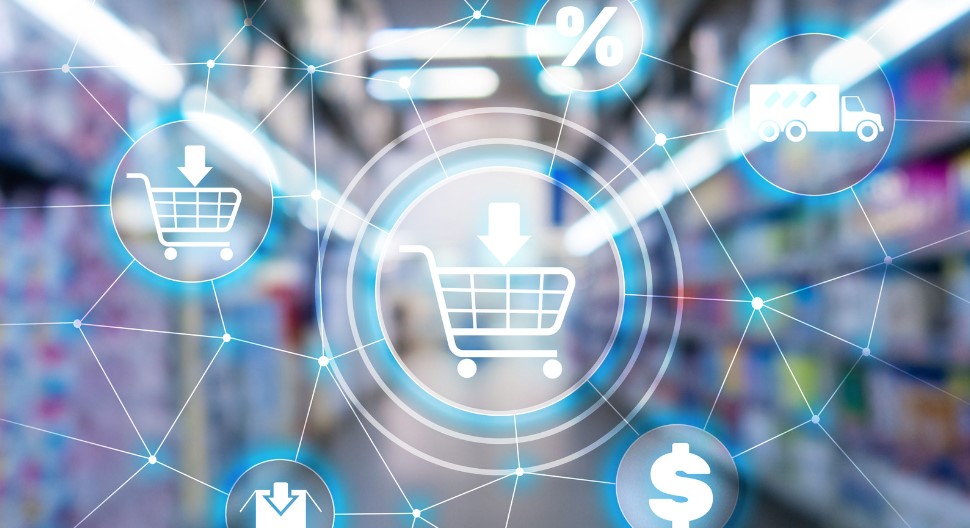The Impact of Tech and Automation on Fulfillment Efficiency in E-commerce
Whether you look at fulfilment as the entirety of processes unfolding from the moment a good enters a warehouse to the moment it’s waiting for its customer to pick it up from its front door, these encompassing services have become essential to e-commerce businesses and key to telling success from failure. That’s why the fulfilment market is to reach 230.68BN by 2030, helping companies save time otherwise spent on processes like shipping and warehousing that can be assigned to other entities.
For what’s worth, a business cannot resist in today’s overstuffed market without using fulfilment methods to secure their competitive advantage and achieve profitability faster, delivering products in intact form and in the shortest time possible to today’s increasingly pretentious consumers.
Two elements have proven indispensable for fulfilment providers, as experts from Monta who handle over 1,800 webshops state, namely automation and technology that speed up the order-to-delivery processes, safeguard packages and transportation to a maximum, streamline the return process, and provide other unparalleled benefits. It’s the only way to meet customers’ expectations or rise above them, as sometimes the speed of delivery makes the difference between a submitted and an abandoned order.
When the bottom line is crossed, businesses often conclude that the speed and quality of the expedition, as well as the ease of returns, become the main goals for the future. In areas like these, automation and technology have a particular say, and as the latest developments and achievements in the e-commerce sector have proven, they’re the future of fulfilment. Together, we’ll discover how technology and automation became vital to improving fulfilment efficiency and why savvy, future-oriented businesses acknowledge they aren’t optional but obligatory today.
New Milestones in E-commerce Fulfilment
Fulfilment centres have grown from necessary service providers for businesses who couldn’t afford to conduct all the processes in shipping, warehousing, and other delivery stages without hurting their budget’s profitability to widespread services that every consumer-concerned enterprise uses sacredly.

A well-developed fulfilment centre today has employed all the developments that automation and technology provide, implementing them in numerous areas of occupation, such as storage, warehousing, bundling, shipping, and other stages that need outsourced deposits and employees. Such specialists handle all the time-consuming processes like maintaining contact with customers, conducting smart calculations to ensure efficient stock replenishment, delivering reports with details like return statuses and dynamic forecasts, and other benefits that make a fulfilment provider stand out.
Embracing the essential evolution of processes throughout each stage of e-commerce business development, companies are now optimizing workforce efficiency and cutting operational costs by incorporating automation and technology. In order to better appreciate the advantages that they bring, we will examine each one closely, extracting valuable insights and discerning the evolving trajectory of fulfilment services.
Technology Improving Accuracy and Efficiency in Shipping and Logistics
Automation technologies have improved tasks efficiency that would long rely on manual labour, boosting productivity and reducing errors. Automating the warehouse through automated storage and retrieval systems helps companies pick, pack, arrange items and streamline inventory management.
On the other hand, technological advancements have directly benefited customers, enabling them to enjoy same-day and next-day delivery, as you can see at Monta. Rapider order processing, exact inventory management, and helpful sipping data improve customer satisfaction. As recent data shows, over 60% of online consumers prioritise a brand’s transparency and trustworthiness, emphasising why and where today’s fulfilment centres can do wonders for customer-oriented brands.
The Leading Technologies Reshaping Order Fulfilment

Numerous technologies have been born lately to improve the accuracy and efficiency of shipping and packaging logistics. However, these underlined below represent the most efficient, reliable, and mainstream ones, which the chosen fulfilment provider chosen should have already in place:
- As the name suggests, warehouse management systems streamline operations unfolding in these establishments and provide refined solutions to optimize puzzling inside processes. Such an app is created to manage and control daily warehouse operations, offering live visibility into inventories and over the whole warehouse performance. WMS considerably improves operational efficiency by centralizing and automating warehouse tasks like packing and picking.
- Automated guided vehicles, or self-guided vehicles, move autonomously around warehouses and unfold numerous processes on behalf of drivers and operators, relying on state-of-the-art navigation systems. Order fulfilment providers’ operational efficiency is boosted due to the flawless movement of stuff around the warehouse.
- The Internet of Things has disrupted every industry by enhancing live monitoring and visibility. Order fulfilment businesses can track the supply chain live, offering correct and updated information on orders’ locations and statuses. As such, the time dedicated to decision-making and correcting errors, among other procedures, is reduced considerably.
- Last, predictive analysis and machine learning over avant-garde equipment to predict and manage inventory, looking into market trends, historical data, and other relevant information. Predictive analysis empowers enterprises to work with an adaptive approach, improving decision-making, stock-adjusting, and other aspects.
Automation Revolutionizing Order Fulfilment to Meet Consumers Where They Are
With venture capital stimulating the automation industry, the world has witnessed numerous warehouse automation innovations and solutions to assist retailers in navigating the difficulties brought on by the current supply chain crisis and other unfavourable economic aspects. A good example is the 1,000 Locus Robotics AMRs released by DHL to enhance robotic picking solutions, with the future intent to deploy 5,000 more across numerous sites. These enable robots to pick up and relocate inventory shelves, improving efficiency.
Fulfilment companies automating their distribution centres witness a ½ decrease in order cycle time, heightened inventory accuracy, and an overall betterment in order fulfilment rates.
Zappos and Warby Parker – Reigning Examples to Demonstrate Automation’s Role in Fulfilment
Zappos, the leading online footwear webshop in the US and abroad, took their warehousing game to the next level by investing in a giant automated establishment with sorting robots, conveyor belts, and an intrinsic labelling system, cutting the processing time in half and shipping merchandise to end users in a substantially reduced timeframe. Due to automation advancements like these, the shoe provider has boosted its traffic on the website and number of clients lightning-speed.
Warby Parker, on the other hand, Warby Parker has proficiently found a way to satisfy the rising number of customers by incorporating a mixture of automated guided vehicles, a sophisticated warehouse management system (WMS) and robotic arms, among other additions. For this move led to a halving of the processing time and consequently brought unimaginable advantages; more and more market participants are looking into the afferent market, fuelling the number of adopters and cementing projections pointing to a WMS market worth 7.30BN by 2030.
The Future Trends and Innovations in Fulfilment

Last-mile delivery is all the rage today, witnessing impressive modifications and seeing smart lockers, autonomous vehicles, drones, and other deployments achieve mainstreamness. In urban UK areas, for instance, micro-fulfilment centres are breaking into the market, empowering rapid deliveries and streamlining warehouse operational space.
Another element marking the future of fulfilment is data-driven decision-making, examining giant amounts of data in a light-speed time, optimising routes, forecasting demand, and improving the total efficiency of the fulfilment provider company and employer’s operations.
Numerous trends and innovations are being cooked in the oven and it’s only a matter of the rapidity and wittiness of companies how fast and efficiently they will adopt the fresh deployments.
Wrapping It Up
The advancement and adoption of the latest technologies, such as artificial learning and machine learning, are revolutionizing fulfilment services and helping them, as well as using businesses, adapt to the ever-changing consumer preferences and stay one step ahead of the competition.
Author Profile

- Guest Blogger & Outreach Expert - Interested in Writing Blogs, Articles in Business Niche | News Journalist By Profession in the United Kingdom
Latest entries
 BusinessNovember 21, 2025A Practical Guide to Using LMS Platforms for Better Onboarding
BusinessNovember 21, 2025A Practical Guide to Using LMS Platforms for Better Onboarding EducationNovember 17, 2025Choosing the Right AI Course for Your Child: A Parent’s Guide
EducationNovember 17, 2025Choosing the Right AI Course for Your Child: A Parent’s Guide FinanceSeptember 19, 20257 Paid Advertising Mistakes That Drain Your Marketing Budget
FinanceSeptember 19, 20257 Paid Advertising Mistakes That Drain Your Marketing Budget BusinessAugust 22, 2025How Recycled Polythene Helps Businesses Exceed Sustainability Targets?
BusinessAugust 22, 2025How Recycled Polythene Helps Businesses Exceed Sustainability Targets?





